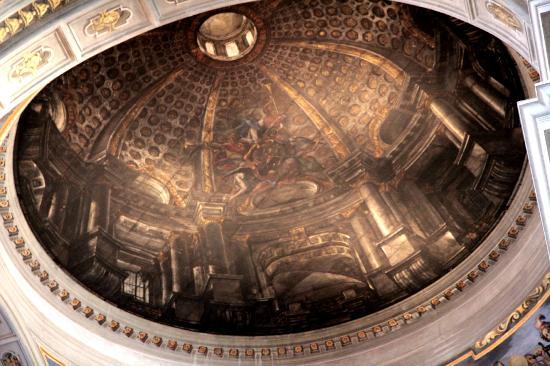This piece is a self-portrait of the artist. They used many different colors in a manner
that mimics some of Henri Matisse’s early work.
They did not use any natural colors that would have been present in an
actual photograph of herself. She
carefully chose an image of herself to be posed like a classical portrait,
facing at a slight angle towards the viewer.
Despite this slight angling, the image overall is symmetrical. The colors are mixed, but repeated on both
side of the face. The background also reflect
most of the colors used on the face. It
appears that there are also different shades of the same base colors in the
face mixed into the background as well.
These colors are usually richer and darker than the colors on the face. The differences in the colors play with the
space the artist was working with. The
darker colors push the space backward while the lighter color pull it
forward. On the face, this shows clearly
which half is facing away from the viewer.
Darker colors create what appears to be shadows along the perimeter of
the face. Outside of the face, the
darker and lighter colors do not hold the same logical meaning for the
viewer. They do not form an easily
recognizable image, nor do they form one that can be deciphered upon closer
study. They seem to be a mix of colors
meant to complement and emphasize the image in the middle through the use of
similar yet slightly different colors next to the ones on the face. This use of different colors without coding a
specific meaning to them is similar to Matisse’s Fauvist work. The unnatural colors change the appearance of
the subject matter, but their combination allows the subject to still be easily
recognizable to the viewer. The
different colors do not all “go” together or match like one would typically
assume colors used together in an image would.
However, the colors still come together to form a logical image because
different shades of the same base colors are used and the brush strokes blend
some if the colors into each other.
This image is also interesting because it is a self-portrait
in an age where traditionally painted portraits are essentially obsolete with
the availability of cameras. Today a
proper painting is rarely used, but can still be found depicting important political
figures and founders or leaders of institutions of higher education. The new self-portrait is the selfie. It is much more accessible to the average
person than an old fashioned oil on canvas painting. This painting is a twist in the selfie. It hearkens back to the paintings of the past
but still works in emulating the selfies that are extremely popular. The selfie is a new self-expression. It can convey the takers personality through
a calculated presentation of self. The
artist took this to another level by manipulating an image of herself through
painting. The different colors gave her
more freedom to choose exactly how she would look in the image. The fact that this was inspired by Matisse’s
Fauvist work means that this piece may have also been exploratory. Matisse played with colors to see how he
would alter an image by changing nature.
The artist here may have been exploring her perceptions of herself
through the use of recreating her own image and experimenting with her presentation
of self.

